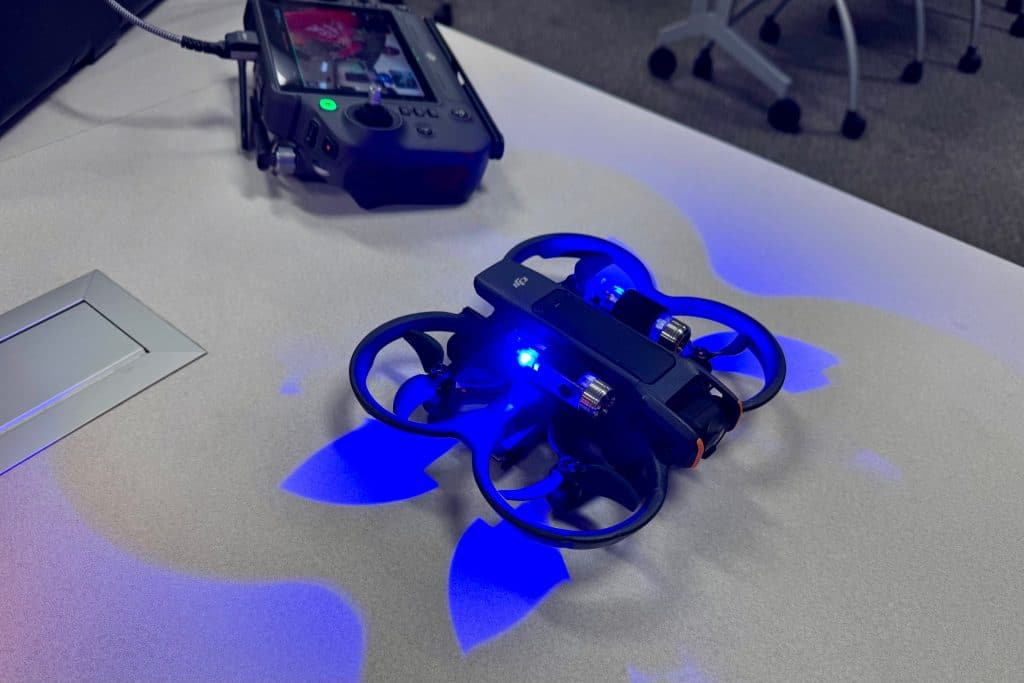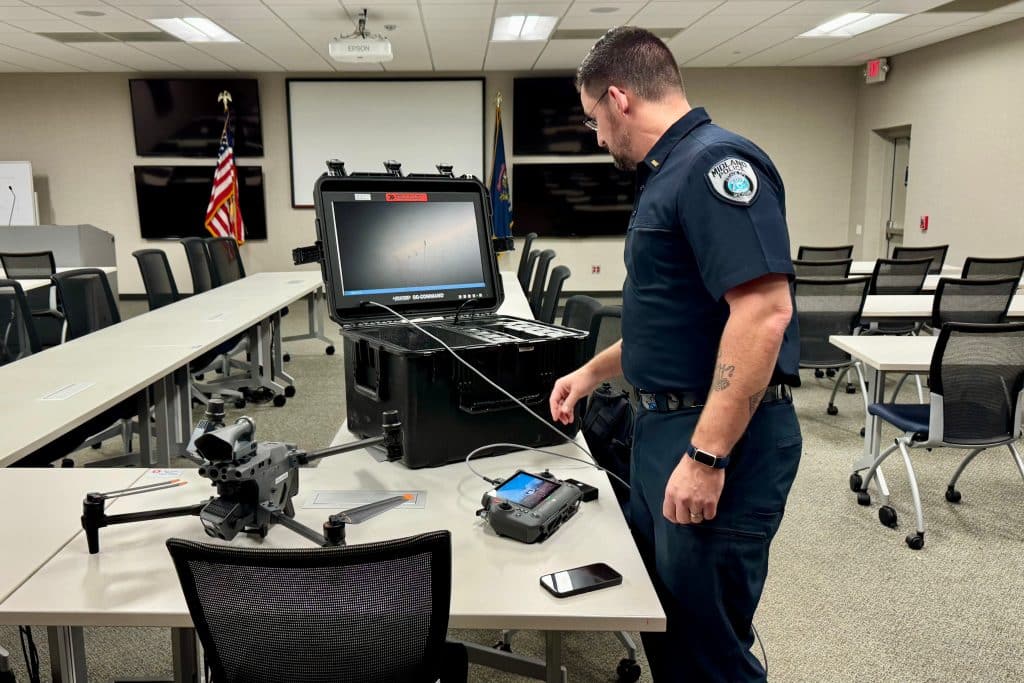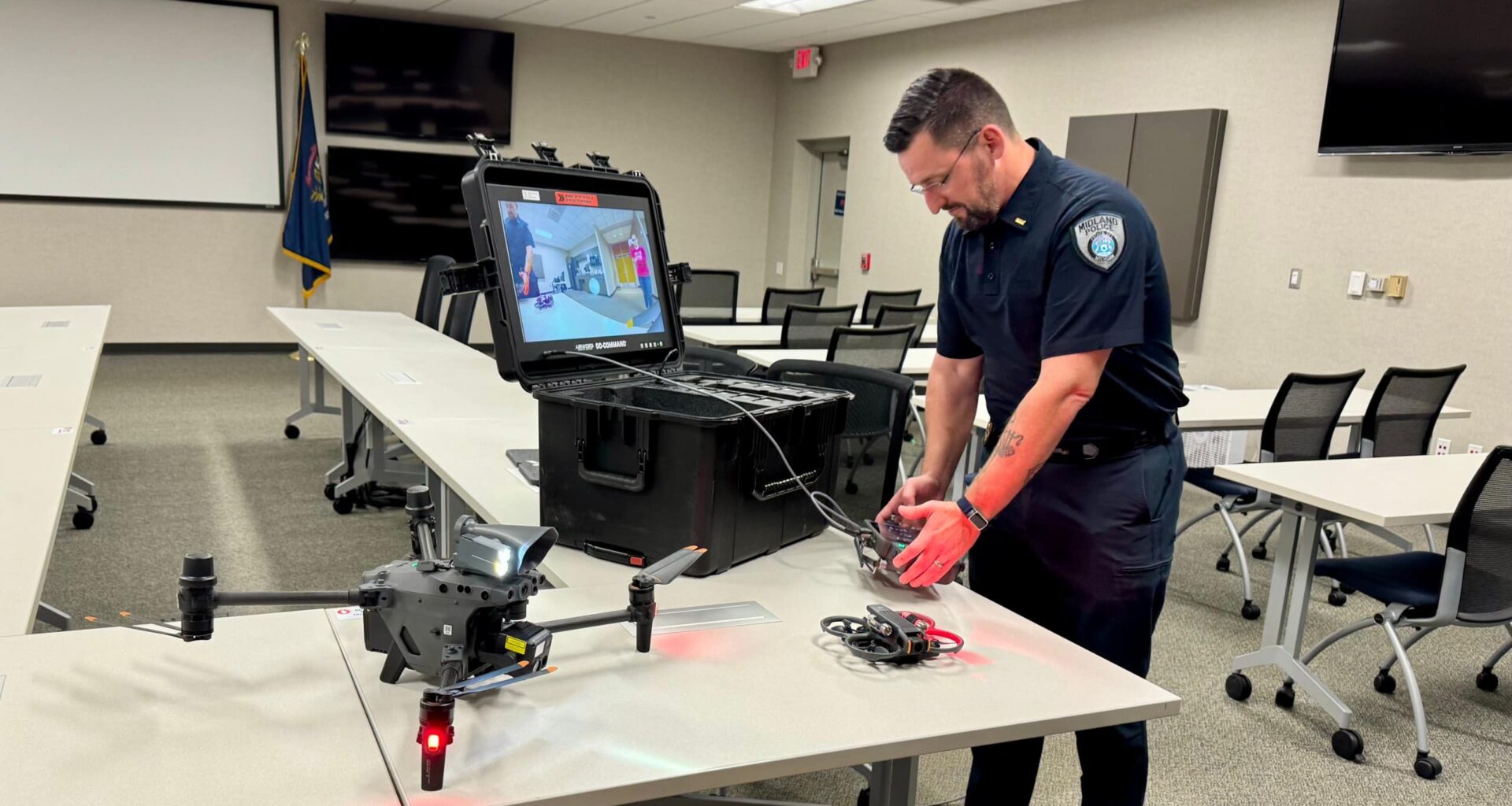The Midland Police Department has steadily integrated drone technology into its operations, transforming the way officers approach public safety, investigations, and large-scale events. While the program is relatively new, its impact has already been felt across the community, from high-profile events at the Midland County Fairgrounds to critical emergency responses. With three drones currently in service and a team of eight licensed pilots, the department’s drone program represents both a commitment to innovation and a recognition of how technology can strengthen modern policing.
The investment in this program totals roughly $25,000, a figure that includes the drones themselves along with the batteries, monitors, and cases required to keep them operational. The most advanced of the fleet, the DJI M30T, accounts for about $16,000 of that budget. With its sensors, multiple cameras, and ability to withstand harsh conditions, the M30T is the backbone of Midland’s aerial operations. Supporting it are two Avata 2 drones, smaller and less expensive at around $1,200 each, which excel in indoor environments. Together, these drones give officers a versatile set of tools that can be tailored to the unique challenges of any call.
The funding for the program came not from external grants, but through the department’s general fund. Police leaders had long considered the potential benefits of drones, but the final push came after Chief Nicole Ford presented the idea to the city council during their annual retreat. She explained both the growing trend of drones in public safety and the concrete ways they could benefit Midland. While the department had explored grant opportunities, drone-specific funding proved difficult to secure. Instead, the council opted to support the program directly, ensuring Midland would not fall behind in adopting a technology already being used by departments across the country.
The department’s path to drones, however, didn’t happen overnight. Lieutenant Dan Keeler and Officer Lance Beyerle had been flying drones recreationally and commercially for years before the department ever had a program. Their expertise provided the foundation for what would become a formal team. After securing the necessary FAA Part 107 certifications, they began to advocate for the program within the department. Careful planning, research into legal and ethical considerations, and budget approvals followed before the first drone was purchased in Summer 2024.
 Drones give officers a versatile set of tools that can be tailored to the unique challenges of any call. Photo Credit: Carly Lillard
Drones give officers a versatile set of tools that can be tailored to the unique challenges of any call. Photo Credit: Carly LillardDeployment began almost immediately. The DJI M30T was first used during the Tailgates N’ Tallboys music event at the Midland County Fairgrounds. “Its role was to provide live aerial footage of the grounds, helping officers manage crowd flow, traffic patterns, and emergency access points,” says Beyerle. This capability quickly proved its worth. With real-time video feeds transmitted to a large monitor case, both command staff and on-the-ground officers could see what was happening across the event space. “The added perspective improved communication, cut response times, and enhanced overall safety for the thousands of people in attendance,” he adds.
Beyond event monitoring, drones have already been deployed in high-stakes emergencies. In January 2025, city police officers worked alongside the Midland County Sheriff’s Office and the Michigan State Police during a hostage situation.
“The drone remained deployed for eight to ten hours, helping officers map the scene, track movement, and maintain situational awareness throughout a tense standoff,” shares Keeler. “In situations where every second counts, having an ‘eye in the sky’ allowed officers to make informed decisions without putting themselves, or others, at a greater risk.”
The capabilities of the DJI M30T make it particularly suited to these tasks. Its 48-megapixel zoom camera provides extraordinary detail, capable of zooming in from 5-16x optically and up to 200x digitally. This allows officers to observe from safe distances while still capturing fine details. Its wide-angle 12-megapixel camera offers broad views of large areas, making it ideal for events, crash scenes, or search operations.
Perhaps most importantly, the drone is equipped with a thermal imaging camera that can detect heat signatures. This tool can search for missing people, spot hotspots during fires, and see through smoke or darkness when the human eye cannot. The addition of a laser rangefinder further enhances its utility, providing accurate distance measurements that are invaluable in both rescues and investigations.
 As technology continues to evolve, drones will likely play an even greater role in law enforcement. Photo Credit: Carly Lillard
As technology continues to evolve, drones will likely play an even greater role in law enforcement. Photo Credit: Carly LillardMeanwhile, the Avata 2 drones fill an entirely different but equally important role. With their smaller size, protective guards, and ability to self-right after collisions, they are well-suited for indoor use. Whether searching a building, documenting the inside of a warehouse, or navigating tight spaces, the Avata 2s give officers a way to explore safely without putting themselves in harm’s way. Together, the combination of large-scale outdoor capability and nimble indoor maneuverability makes Midland’s drone fleet highly adaptable.
Monthly training sessions, led by the team leader and assistant team leader, ensure that skills remain sharp and that officers are prepared for the wide variety of missions drones may support. This commitment to training underscores the department’s recognition that drones are not toys or gadgets, but serious tools that require expertise to use responsibly and effectively.
With this financial investment, careful planning, and a dedicated team of trained pilots, the department has expanded its ability to serve and protect the community. As technology continues to evolve, drones will likely play an even greater role in law enforcement. For Midland, that future has already begun, and the benefits are clear with improved safety, enhanced efficiency, and a stronger connection between the department and the people it serves.
